 This week Avaaz, the “campaigning community bringing people-powered politics to decision-makers worldwide’, started the beta-testing of its community petitions platform, which allows anybody to launch a petition in a question of minutes. This new systems empowers anybody to make use of the streamlined processes and tools that have allowed Avaaz to grow its user base to more than 14.400.000.
This week Avaaz, the “campaigning community bringing people-powered politics to decision-makers worldwide’, started the beta-testing of its community petitions platform, which allows anybody to launch a petition in a question of minutes. This new systems empowers anybody to make use of the streamlined processes and tools that have allowed Avaaz to grow its user base to more than 14.400.000.
 Avaaz thus follows the recente move from change.org, the “social action platform that empowers anyone”, which just two weeks ago ‘absorved’ the Spanish platform “Actuable” and is now planning to translate its ‘petition making system’ to many other languages to really extend its reach worldwide.
Avaaz thus follows the recente move from change.org, the “social action platform that empowers anyone”, which just two weeks ago ‘absorved’ the Spanish platform “Actuable” and is now planning to translate its ‘petition making system’ to many other languages to really extend its reach worldwide.
Each of these platforms claims to have promoted petitions that forced very important political ‘actors’ to react: from Hillary Clinton to Presidente Morales, from Bank of America and Apple to Hilton Hotels.
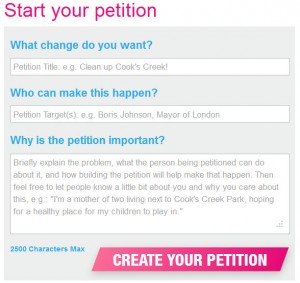 This is an interesting ‘tectonic’ move in the realm of (e)Participation, which we should follow closely. It is, additionally, much related to the discussion about “Sticks and Carrots” we hold in Pep-Net’s blog a year ago.
This is an interesting ‘tectonic’ move in the realm of (e)Participation, which we should follow closely. It is, additionally, much related to the discussion about “Sticks and Carrots” we hold in Pep-Net’s blog a year ago.
We were then reflecting about questions like: is it better to praise “good deeds” of Corporation and Politicians, or is it better to warn and punish them when they “misbehave”? Why not both things at the same time?
Anita Roddick, the founder of the Body Shop, reported that once an executive of Shell told her: “We don’t fear regulation, we only fear consumer revolt”
Well: it is clear now that consumer and citizens are getting better at revolting and exerting pressure. Change is happening out of anybody’s reach, and (e)Participation is slowly “getting teeth”, which soon will be able to hurt enough as to influence behaviour: if you do not want your brand reputation to get ruined… you better behave!!! And this applies to corporation as much as political actors.
The promise of a ‘Future Goverment’ that becomes FAST (flatter, agile, streamlined and tech-enabled) -which was delivered in the last World Economic Forum- starts to be truth. But, for sure, it is not government who is promoting it. It is NGOs and CSOs. It is citizens.
It is important to note that the technology behind these petition plattforms is very, very simple. The concepts and processes of use are also not sci-fiction. But for sure, this kind of powerful, sustainable and social minded (e)Participation was rarely promoted by our Governments’ Innovation Support Actions. Instead of an impact oriented eParticipation research, put at the service of Civil Society, a Government- and Academia-centred approach was preferred. And thus eParticipation has just advance by little steps.
It is a pitty, because these platforms are now out there, growing. They were created with less (or ‘no’) involvement of eParticipation researchers. And that means that we do not have easy access to the very valuable information about eParticipation that these systems are generating (about pattern and reasons of use, users’ demographics, typologies of action, success rates, etc).
We should reflect about this. We have not so many more opportunities to miss. The field is developing faster and faster. Do we want to be part of it?
]]>
Alenka Krek-Poplin
Having studied Surveying in Ljubljana before specialising in Geographical Information Systems through work and academic study in Austria, the US and Germany, Prof. Alenka Krek-Poplin is co-founder of Hamburg’s Digital City research group, which focuses on the application of spatial data-modelling to city planning. She writes, researches and teaches on computer-aided participation in spatial planning at the HafenCity University Hamburg.
Alenka’s work focuses on how, by adding an element of fun and enjoyment (or joy) to spatial planning, it can be made more interactive and compelling and thus increase levels of participation. Her recent article “Playful public participation in urban planning: A case study for online serious games” explores aspects such as story-telling, sketching and drawing, and digital games that have the potential to make public participation (in my words) easier and less boring.
The example she draws upon in the article, Nextcampus, was a prototype of a game that she and some of her students designed and simulated. The prototype game dealt with the suggested relocation of the University of Hamburg, which has been a hot topic in recent years.
Added to this, she has conducted several projects that explore the use of public participation through geographical information systems. One of these projects was a survey of how people use the waterways around Wilhelmsburg, an island in Hamburg’s River Elbe. Participants were asked whether they carry out certain activities and were able to draw on the map, stating where they engage in them.
The most recent example, sowillichleben.com, is a website built by students to enable them to influence the building of their halls of residence in a game-like manner. One of the ways students were able to express their wishes was to stick virtual notes on areas that represented private room, communal area, and surrounding area. So they could, for example, stick a note with “privacy” on the part representing their room, and “meet new people” on the part representing the communal areas. She has also been involved in a project that enabled citizens to plan the layout of a town square using 3D objects.
In her paper describing Nextcampus, Alenka details some of the criticism that the model attracted from some experts who were asked to evaluate it. One of these was the difficulty in distinguishing between when participants are just playing, and when they are serious about what they are suggesting. I am looking forward to discussing this point at the PEP-NET Summit because it acknowledges a part of participation that I feel we pay much too little attention to. We tend to ignore that citizens always have participated in discussions with no expectation, or even desire, of their discussions leading to some kind of result, for example talking about politics at the pub, going to events to hear about political topics but not doing anything about them, and taking part in flashmobs; but this type of not-for-real participation is essential and, I suspect, one way or another leads to a much healthier public discourse and ultimately better public decisions.
Of course the other half of the equation is what to do with the results that people mean seriously, and we will be talking about that too!
For more information about the PEP-NET Summit and to register, visit https://amiando.com/pep-net. You can also find information at https://pep-net.eu/the-pep-net-summit-out-in-the-open/
]]>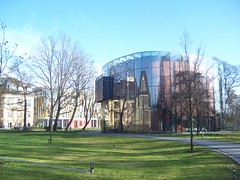
Photo by karikas on Flickr.com
The PEP-NET Summit 2012 will take place on 14th May 2012 at the Bucerius Law School in Hamburg. We are looking forward to an interactive event with plenty of space for networking and discussion. Anybody who is interested in eParticipation, at all levels of experience, is invitedto attend.
With an audience of European eparticipation enthusiasts, local engaged citizens, and representatives of the City of Hamburg, the PEP-NET Summit will again be a bustling marketplace of ideas and an opportunity for participants to catch up with each other and meet new people.
The first PEP-NET Summit took place on 23rd September 2010. We heard speeches from Cisco’s Paul Johnston, Andrea di Maio from Gartner, and Anke Domscheit-Berg amongst others. The summit was moderated by Richard Wilson and speakers from across Europe had the chance to present their projects and ideas in small, informal “presentation corners”.
Please block the date in your diary and register via amiando.com/pep-net. There is no entrance fee and places will be allocated on a first come, first served basis.
We look forward to welcoming you to Hamburg!
]]>A secretly-negotiated deal to protect intellectual property would always be something for the net community to get worked up about. Following the signature of the treaty, only MEPs can block it. They are the targets of an Avaaz petition, which has just rolled over the million mark at the time of writing, imploring them not to let it through.
ACTA is an international treaty aimed at preventing trade in counterfeit goods, with implications for alleged copyright infringements on the internet. The treaty, which has attracted controversy because it was negotiated in private, has been adopted by the EU but still needs formal ratification by the EU Parliament. The provision of ACTA that is most controversial is article 27 (4):
“A Party may provide, in accordance with its laws and regulations, its competent authorities with the authority to order an online service provider to disclose expeditiously to a right holder information sufficient to identify a subscriber whose account was allegedly used for infringement, where that right holder has filed a legally sufficient claim of trademark or copyright or related rights infringement, and where such information is being sought for the purpose of protecting or enforcing those rights.”
In other words, the treaty suggests that signatory countries may want to empower their authorities to force website owners to hand over users’ details, if they are alleged to have used their account for unlawful purposes. As opponents argue, requiring service providers to divulge information about users is problematic for services that encrypt information in a way that means that they themselves cannot access it. It also means that infrastructure is put into place that can be abused for less peaceful purposes such as threatening privacy rights and freedom of expression.
Kader Arif, French MEP and rapporteur for the treaty, resigned as a result of the signing. (In case you’re wondering what a rapporteur is/does: here’s a description.) As reported in the Telegraph, Polish MPs covered their faces with masks from the political hacker group Anonymous and there have been street protests in Poland against the treaty.
Gathering around the hashtag #acta, there are already calls for street protests in other countries including Germany. Between now and June, when the vote in the Parliament is due to be held, we will find out whether net advocates in Europe will come into their own in the same way that they did in the US.
Thanks to Daniel van Lerberghe for this article’s new improved title!
]]>In this PeP-NET post we would like to share a tool we have developed, “The matrix of civic implication”, whose main aim is to support the development of conceptual clarity when analyzing participatory venues and participatory initiatives. If used wisely, we think the matrix is a powerful “tool”, that goes beyond alternative models (like OECD, IAP2 or Fung’s), and should allow researchers, practitioners and the ‘man in the street’ to better understand the core dimensions of participatory activities.
The Matrix of Civic Implication
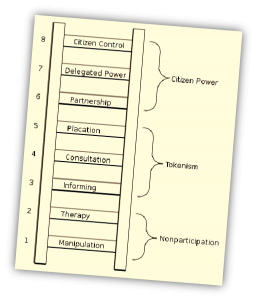 Since Sherry Arnstein presented her “Ladder of Citizen Participation” in 1969, tens of models have been proposed with the aim to describe “participation”.
Since Sherry Arnstein presented her “Ladder of Citizen Participation” in 1969, tens of models have been proposed with the aim to describe “participation”.
The problem with these models is that they tend to be either too basic -and thus they add less value- or they are too complex and specialized, and in this case they are too cumbersome to be applied.
For this reason… a lot of confusion exist in this field.
Our matrix tries to find a pragmatic balance between usefulness and complexity, and provide a tool that is at the same time powerful, practical and easy to use. It allows practitioners and theorists to compare in a matter of minutes different Participatory experiences. The model was developed to be applied to “municipal participation” initiatives, but it can be applied to other kind of participatory experiences.
The Matrix identifies four fundamental dimensions of participatory initiatives, which be informally “visualized”, and thus make this model especially suitable for comparing initiatives:
1. INTENSITY OF COLLABORATION:
This level is based on the original ladder, and describes the level of collaboration exercised. It goes from Manipulation, Information and Consultation levels up to the levels of Collaboration, Delegated Power and Delegated control. We have slightly renamed some of Arnstein’s rungs and added some fundamental extra rungs, like the ones corresponding to “Conflict” and the “transparency” rung, which is considered as a pre-requisite for any real “Collaborative Participation”. More details on the meaning of the different levels are provided below.
2. ACTORS involved in the participatory exercise:
This dimension allows differentiating the actors, grouping them under the categories of “affected”, “participants”, “promoters” and “decision makers”. It also classifies them as political actors, corporate actors, civil society actors, or others. More categories and actors can be considered. The ones shown in the picture are just an example. The actors’ names displayed in the attached matrix have just and illustrative character: more categories and actors could be considered, in case they were needed to analyze the participatory exercises. Thanks to the inclusion of this dimension, the model can be applied to analyze both “administrative, top-down participation” (sponsored and organized by governments) and “autonomous participation”, which could be really bottom-up (initiated by citizens) or initiated by some other Civil or Corporate actors. More details below.
3. INSTITUTIONALIZATION LEVEL:
This essential dimension has often been neglected in most participation models. The institutionalization levels range from the lowest “Sporadic” and “Episodic”, through “Periodic” and “Continuous” levels of institutionalization, to the highest “Functional Institutionalization” and “Organic Institutionalization”.
Functional Institutionalization refers to cases where laws have been approved that enact legal procedures and channels, which allow citizens to initiate some kind of participatory interaction. For example: citizens’ initiatives, right of petition, mandatory hearings in urban planning, participation in city council, etc.
Organic Institutionalization, finally, refers to the cases where participatory organs have been constituted with a permanent or semi-permanent character, with representation of different actors involved. These organs generally have a decision-making or a controlling mandate, and allow interested citizens and/or citizen groups to become involved in the policy areas covered by the participatory institution.
4. DELIBERATIVENESS:
This dimension allows to, informally, specify the kind and intensity of deliberation that the participatory experience motivates. Deliberation is a particular form of reasoning and dialogue, in which the costs and consequences of various policy options are carefully weighed, taking into account the views of all concerned.
The Matrix of Civic Implication is a tool that helps project managers, practitioners and researchers to describe what they are doing or what they are planning to do, taking into account the most fundamental participatory dimensions, and making it possible to compare between different options or approaches.
This conceptual model is intended to remain open and flexible: additions or changes are welcomed in the case the analyzed participatory experiences require them.
For example, it could be interesting to consider the moment within the “policy making cycle” (from Agenda Setting to Evaluation) where the participation happens. Another possible addition could consider the technological tools or the participatory methodologies used. But these extra dimensions are normally not essential to understand the core of the participatory experience, and are thus not part of the base model.
In many cases a participatory initiative is composed of different participatory activities, each of them with different aims and different stakeholders involved in them. The matrix could also be used to depict individually each of these activities, to get a deeper understanding of the whole experience.
The aim of the model is NOT prescriptive, but descriptive. It does NOT claim that higher intensity of collaboration, or a dense deliberativeness, or an extreme institutionalization level is always better. This actually depends of the environment and the objectives that are pursued with the initiative. The model thus explicitly recognizes that different situations require different approaches. It is the quality of participation that matters more, not the amount, nor necessarily the level at which it, suppossedly, happens.
The model is explained in these videos, which are part of the teaching materials we prepared for a course on “Citizen Participation and Digital Technologies”, that we imparted in collaboration with the Inter-American Organization for Higher Education. The course materials are in Spanish, but these videos include English subtitles:
YOUTUBE: 10.a. The Advent of Civic Implication. Part 1
YOUTUBE: 10.b. The Advent of Civic Implication. Part 2
More detailed descriptions of the “Intensity of collaboration” levels
Let’s have a more detailed look at the meaning of the “Intensity of collaboration” levels, starting with the lowest.
The rung “Manipulation”, that is part of the “Non-Participation” category is characterized by the attempts to manipulate: to keep people quiet, satisfied, with the impression that they are being heard… but actually there is no real intention to listen to them.
With different levels of sofistication, participatory venues are designed by decision-makers so they can exert control of it, and use it just to ratify decission that have already been taken, or to comply with legal requirements, etc.
All this was linked by Arnstein with the idea of “therapy”. And sadly enough… much of the political participation that is carried out nowadays is of this type.
Under the “Non-participation” level we have included the “Conflict” category.
This happens when citizens realise that the existing participatory venues are not satisfactory, and decide to show their dissatisfaction.
The firs rung, “Legitimate coercion”, is when the means used are “pacific”, civic protest, civil disobedience. We are speaking here of things like the Spanish “Indignados”, the #occupywallstreet movement, or the #realdemocracynow.
People’s capacity to connect one with another is increasing, and the current global crisis is evidencing that our current representative democracies are very “low-quality”. It is clear that this ‘Legitimate coercion’ will continue growing. Without losing its “pacific” character, this kind of action could win more and more disrupting capacity: coordinated demonstrations and strikes, boycotts, delays in paying taxes, etc. This coordinated actions can increasingly get directed at punishing political actors by means of voting, and thus “biting where it hurts” to them.
The rung of “Illegal Duress” refers to even stronger conflicts, and includes harder responses: sabotage, property destruction and robbery, terrorism… all this kind of actions can be understood, in many cases, as a way of expression when the “existing” mechanisms are considered as “non-working”.
With regards to the upper rungs: “Information, Consultation, Advisement”, they reflect the traditional levels in which a decision-maker can engage with people to improve the decisions.
The most basic rung -“Information”- means the case where some (or even much) information about what is being done, or planned to be done, is provided. That’s already a difference, with respect to “Manipulation”.
“Consultation” means that some channels (like polling, or focus groups, or… whatever you can imagine) are created that allow some kind of feedback from the citizens to be heard by the decision maker.
“Advisement” rung goes a little bit further, and allows that the citizens, their associations… are providing elaborate advice to the decision maker, as part of a conversation.
The most important aspect with regards to this category, called “Consultative Participation”, is that the decision maker is finally taking the decision that he prefers. She is just asking for opinions, argumentations, views… but retains the capacity to judge them and act in any way that suits her understanding and convenience. How much consideration receive the views expressed through the engagement mechanisms… depends entirely on the will of the decision maker. This is why Arnstein termed it “Tokenism”.
Let’s now go to the top.
Above the “Consultative Participation” category that we have just reviewd, the category for “Collaborative Participation” comes. This is the category where the “Intensity of Collaboration” is stronger. This is a type of participation where “real collaboration” is expected, in its various levels.
At the very top is the “Delegated Control” rung. It means that the control of some decision-making area is delegated to the participatory institution or organism. Usually the decision maker could reclaim the control in case of emergency… but by default he would be willing to accept the results of the participatory collaboration (normally, the decision maker will also be member of the participatory mechanism, and thus able to defend his interests).
The next rung, “Delegated Power” is a more conservative approach, that just delegates some partial, limited “power”, to the participatory institution. This way, more safeguards could be in place (veto, etc.).
The next level is “Collaboration”. In it, even if no power is explicitly delegated, the decision making capacity is implicitly or explicitly shared through the principles of “honest collaboration”, understanding that participants are partnering together to find good solutions. Thus what is recognized and agreed by means of this cooperation should necessarily influence, in a sensible way, the final decision, as well as the actions of all participants.
Thus, we come to the “Transparency” rung, which is the most radical change with respect to Arnstein model.
First of all: it is important to recognise that the nature of this rung is a little different than the others. It is more a “pre-requisite” for the collaborative participation than a way of collaboration on its own.
Why a pre-requisite? Well, because if you want to really collaborate, in a trustful way… all participants should have access to all relevant information available.
Transparency means open data and open government: a compromise to proactively share all relevant data, so all partners can inspect and work on it, both pro-actively (to ellaborate proposals, for example), or after some issue has happened (to discover ineficiencies or corruption, for example).
Transparency has a tremendous effect on the incentives of any administrative body. If you know that all your actions are visible, that they can be inspected… the ‘margin for corruption’ is strongly reduced.
Hidden agendas are also more difficult to keep: decision making can thus become more fact-based and deliberative, and all participants will be more motivated to find real “best solutions” and win-win arrangements.
For this reason, the “transparency” rung, and its “Pre-participation” category, are placed above the “Consultative Participation”. Consultative participation can actually happen under a dictatorial structure. Transparency is necessarily linked to collaborative and democratic settings.
One final remark: All this levels are, in first place, considered with relation to public authorities and government. But in general they can be applied to any institution with capacity to make decisions, and share this capacity with other stakeholders. In particular: corporations will increasingly be subject to demands to increase their “transparency”, as a requisite to collaborative participation of the people (which, should not be forgotten: are also customers, and able to harm companies in weeks, just by slightly coordinating their buying behavior).
Increasingly, if there is not enough transparency, or if the ethical behaviours of the companies are not satisfactory, people will go for “CONFLICT”, meaning boycotts or even stronger measures (imagine a coordinated action to retire funds from “un-ethical” banks: no public money will be able to save a bank whera a big share of their customers coordinately decide to claim their money back).
So… everybody should pay more attention to the developments in this field.
There is a strong demand for powerful collaboration tools. Internet is about to impact democracy, when the use of these tools gets critical mass. We should all try to make sure this happens in a constructive way.
How to handle top-down and bottom-up participation in the matrix
The Matrix intend to cover not only “top-down” public participation, but also the “bottom-up”. And even a new form of civic engagement we invented (partly, as a joke), called “from-the-middle-and-around”. Both the “top-down” and the “bottom-up” perspectives are too simple conceptualizations… that are not able to comprehend the nuances of such a complex phenomenom as civic engagement.
 In fact, we consider more interesting the bottom-up or mixed engagement models, as the pure “top-down”/ administrative participation has proven to be quite limited in its transformative effect during the whole 20th century. All this is related to the “administrative” and “autonomous” forms of participation that we previously referred to (see image).
In fact, we consider more interesting the bottom-up or mixed engagement models, as the pure “top-down”/ administrative participation has proven to be quite limited in its transformative effect during the whole 20th century. All this is related to the “administrative” and “autonomous” forms of participation that we previously referred to (see image).
Actually, it is because of this willingness to embrace autonomous “engagement” that we chose not to name the model the “Matrix of Citizen Participation” (following Arnstein) but the “Matrix of Civic Implication”.
Citizen Participation somehow suggest that “citizens” (no immigrants? no kids?) slightly “participate”, collaborate… with an initiative whose ownership lies somewhere else. “Civic implication”, on the other hand, aims to suggest an “engagement”, a “personal implication” with something that is recognized as “own” by person, by the neighbor.
How would the “top-down / bottom-up” character of the participation be reflected in the model?
Well, especially through the recognition and configuration of the “Actors” involved, at the top of the matrix, which by default is used to displays different possible administrative, corporate and civil society actors, as a way to facilitate the comparison of initiatives (see, for example, this comparation of “Mayor talks with neighbors” and the “Participatory Budgeting of Fortaleza (BR)”.
 Let’s imagine a case of bottom-up participation. For example, the case where the “participants”, “promoters” and “affected” are just the citizens of a neighborhood, which autonomously organize themselves (maybe with the support of a NGO) to propose the mayor (decision-maker) some kind of action… we would have this kind of autonomous participation in action.
Let’s imagine a case of bottom-up participation. For example, the case where the “participants”, “promoters” and “affected” are just the citizens of a neighborhood, which autonomously organize themselves (maybe with the support of a NGO) to propose the mayor (decision-maker) some kind of action… we would have this kind of autonomous participation in action.
If there is no request to be presented to the Mayor, but just a process of community self-organization… this would be reflected by not including any “decision-maker” or considering the “decision-maker” to be the own community.
And for sure, depending of the kind activities carried out (running a poll in the neighborhood, or deliberatively elaborate the proposal, or even voting at the end on the open points…) you would have different levels of involvement, or “intensities of collaboration”.
It is, anyway, just a tool -like, for example, scissors- whose real value is shown when it is put to work. In the same way that you would use slightly different scissors to clean a fish, to cut your fiancee’s hair, or to allow your daughter to handicraft… the matrix might need to be modified, extended, complemented with other analysis or… whatever, to suit the need of the user. It all depends on what is desired to illuminate with its help. The Matrix “humble aim” is to provide a clear base-line for analysis and communication. On top of that, all additions are welcomed, if they make sense.
Another example: in case there was interest in analyzing, or making more visible, the “power” relations in a concrete participatory initiative, you could decide to display only the actors that are participating, and perform some kind of “stakeholders analysis” to asses each actors’ power, urgency and legitimacy toward the issue, and thus determine the kind of role they can play (Dominant, Dormant, Dependent, Demanding, Definitive, etc.). [see https://www.jstor.org/pss/259247 ]. Thus, you could use different intensities of colors to reflect the power, etc.
That’s all, sorry for such a long entry. We thought it was worth sharing. We are waiting for your comments!
]]>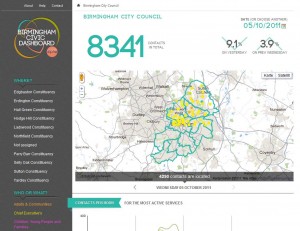
Birmingham Civic Dashboard screenshot
In its recent consultation document ‘Making Open Data Real’, the UK Government expresses high hopes for open data, heralding it as possibly “the most powerful lever of 21st century public policy”. Following several years of open data advocacy, activism and hack days, in the UK open data is moving towards the mainstream thanks to unanimous backing from the coalition government and the opposition.
The latest move in open data comes from Birmingham City Council, which today launched its ‘Civic Dashboard’. This is a web site publishing raw customer services data along with a slick visualisation, which was made possible by a grant that Digital Birmingham received as a result of winning a competition run by the National Endowment for Science, Technology and the Arts (NESTA).
The Civic Dashboard draws its data from the customer service centre set up as part of the Council’s Business Transformation programme. An extract of data about all customer enquiries, whether by telephone, internet or email, is recorded by the customer relationship management system and fed into the Civic Dashboard in an aggregated (anonymised) form once per day. Where the data is geocoded, it can be presented on a map to show how many contacts originate from a particular ward or constituency. You can even see which channels the enquiries come through, which shows that the Council receives far more enquiries by telephone than through other channels.
This is an important step towards bridging the gap between eGovernment and ‘weGovernment’. Coming from the Council that was heavily criticised for spending £2.8m on its website as part of its eGovernment transformation, especially by Birmingham’s vocal social media users, opening up the data that is produced in the background shows what the new infrastructure can do beyond serving up static content. Doubtless there are many more datasets that exist as a result of the transformation programme, and if these are released in the future, perhaps Brummies will feel they got a better deal out of transformation than they first thought.
This itself is quite a paradox: such a handover of control to the citizen wouldn’t have happened if it weren’t for the huge transformation programme because IT is absolutely necessary for the collection of data in a reusable form.
Another important aspect is the fact that the raw data comes with a ready-made visualisation tool, which is presumably what most people will interact with. On the one hand, some would argue that it should be left to non-state entities to interpret the data. Although this will probably be the case in future, Birmingham (together with NESTA) engaged Mudlark, a local service provider, to develop the website on their behalf. This model – of commissioning the data visualisation, not developing it in-house – addresses the issue of risk sharing: especially in the early days of open data, small companies may not be able to afford to risk creating applications based on data that there may not be a market for, and that – for all they know – may not be collected for ever, at least in the current format.
Even where an authority doesn’t publish its own visualisation of the data, in my opinion there will still be a role for them to intervene in some cases. For instance, if someone were to notice that there are far more requests from Hodge Hill than Sutton Coldfield (a more affluent area), and claim that resources are unfairly distributed, a Council official might intervene using social media to draw attention to the fact that far more council housing tenants are located in that area, and are most likely making enquiries to the Council as their landlord. This assumes that the necessary data (on distribution of council housing) is available; if not, it could lead to calls for more data to be opened. Thus, opening some data can lead to calls for more.
There is much more to be said about this example of open data in practice, which is possibly the first time a large public authority has bridged the gap between between e-government and ‘we-government’ using open data. I’m sure it will be said on this blog and elsewhere for a good while to come!
Many thanks to Simon Whitehouse, of Digital Birmingham (part of Birmingham City Council), for explaining the Civic Dashboard to me.
]]> Nikolaus Münster is Head of Press and Public Relations at the City Council in Frankfurt/Main, Germany. I spoke to him about the city’s “Social Media Newsroom“, which gathers content from all of its social media channels and presents it on one website.
Nikolaus Münster is Head of Press and Public Relations at the City Council in Frankfurt/Main, Germany. I spoke to him about the city’s “Social Media Newsroom“, which gathers content from all of its social media channels and presents it on one website.
Nikolaus gained inspiration for the idea when he took part in a European exchange programme in 2009, completing a secondment at Birmingham City Council. That is where I met him and where he learned about Birmingham News Room. Apart from anything, I think this is a nice bit of European best practice exchange, which can often be hard to quantify. It’s also nice to see Frankfurt getting something in return for the Christmas Market that they send to Birmingham ever winter!
John Heaven (JH): What is a Social Media Newsroom?
Nikolaus Münster (NM): Our Social Media Newsroom brings together all of our social media channels on one website. The user can view this site to see news about the city on Twitter, Facebook, blogs, YouTube and other media at a glance.
We have been using these means of communication for a while now. Since 2009 we have been on Facebook, Twitter and Youtube. When we started we wanted to gain experience before actively publicising our social media presences. Now, social media are central to our communication strategy.
JH: What is the main aim of the Newsroom?
NM: The Newsroom representes an improvement in user experience. The most important point is that all channels are brought together on a single website, enabling users to get an overview of what is being put out by the city — whether on Facebook, Twitter, Youtube or other channels. This is more convenient for all users, not only those that aren’t Facebook or Twitter members.
JH: How does Frankfurt choose which tools to communicate with?
NM: Communications and PR always have to keep up with current developments in the way people communicate. Newspaper and email, for example, still play an important role. However, the channels that we currently use are simply the most important in terms of reaching large numbers of citizens. This may change in the future, so we keep an eye on new developments and must be open to trying new things. We are monitoring Google+, for example.
JH: Where did the idea for the Newsroom come from?
NM: It was Birmigham News Room that gave me the idea when I was in Birmingham. The idea of a social media newsroom was unheard of in Germany. At first it was difficult to describe the idea concretely and plausibly. However, following a conversation with a SAP-employee, we were able to define it more exactly. He advised on the technical realisation, which in our case is based on WordPress. I think it’s really important to have people in-house who have a thirst for innovation and who are able to put ideas into action.
JH: Is there a big difference between Frankfurt Social Media Newsroom and Birmingham News Room?
NM: The biggest difference is that we don’t have the Media Watch. That is something that we are looking into, because it would be nice to have all news relevant to the city displayed in a prominent place on the website, although our newsroom does display news from local newspapers.
JH: How do you keep track of social media use when any employee is able to set up a Twitter account of Facebook page? And how do you stop the resources required from spinning out of control?
NM: We tackle this problem with our social media guidelines, which state that only the Press Office is allowed to represent the city in an official capacity. But we have nothing against departments opening social media accounts for their particular target audience. That can make a lot of sense for services with specific audiences. Of course employees are free to use social media in a personal capacity.
Social media does require investment of extra resources, because it’s not just about broadcasting information over a different channel. Instead, you have to be prepared to innovate. This extra cost is hard to manage. We started using social media without investing extra resources, but soon we will have to think about taking on extra staff. On the one hand you have to make sure you don’t spend your whole time on social media, but if you choose to do so you have to take it seriously and actively look for opportunities to make use of them.
JH: Under what conditions would you advise other cities to open a social media newsroom?
NM: I would advise cities with established social media presences and audiences, and therefore experience with social media, to open a social media newsroom.
JH: Do social media offer advantages over conventional media – newspaper adverts, letters, flyers etc. – other than being inexpensive?
NM: Yes, of course. Social media can be very labour-intensive. You have to respond to critical comments that people may post about you because social media is all about dialogue. But we get lots of “Likes” and social media represent a very direct channel to our target audience. They are really good for our purposes.
JH: Do you know of any examples of innovative social media use by other directorates?
NM: Above all, museums and organisations with direct contact to the public. Examples that occur to me are: Städelmuseum, Kunsthalle Schirn, das Museum für Angewandte Kunst, das Museum für Moderne Kunst (MMK).
JH: What did you learn during your time in Birmingham? Does Birmingham communicate differently from Frankfurt?
NM: Birmingham invests a lot more in communication than Frankfurt does. They make a big effort to make their communication easy to understand and even produce some brochures with pictures and single sentences for people that can’t read so well as well as pamphlets for disabled people telling them about dangers that they should be aware of. Producing these materials is a painstaking process because they are tested on the target groups before being published.
JH: Would you advise others to take part in a similar exchange programme?
NM: Yes, definitely. I learnt a lot from colleagues during my time in Birmingham. While I was there I wrote an article every week for the staff intranet in Frankfurt to share my experience. There was a lot of interest from colleagues, with the articles receiving up to 1,000 views each. I really would recommend taking part in such a programme.
JH: Nikolaus, many thanks for taking the time to talk to me.
]]>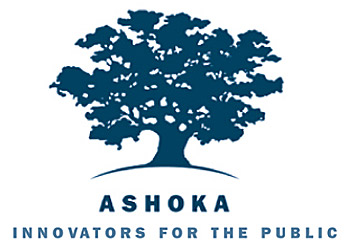 Ashoka Foundation, with the support of Google, has launched Citizen Media: A Global Innovation Competition. Well, it was launched more than one month ago, but you still have 19 days (till Sep 14th) to present a proposal.
Ashoka Foundation, with the support of Google, has launched Citizen Media: A Global Innovation Competition. Well, it was launched more than one month ago, but you still have 19 days (till Sep 14th) to present a proposal.
This competition is very related to the e-Participation field, as Ashoka considers it as linked with the fields of “Citizen participation” and “Journalism”.
Ashoka and Google are seeking innovations that will allow global citizens to have a voice and the information they need to make change. The competition welcomes solutions that work with any communication or information technologies—not just the Internet. The contest is open to solutions around the world: you ara allowed to present you entry in English, Spanish, Portuguese, French, Arabic, Thai, Indonesian, Mandarin or Japanese.
Some of the benefits mentioned for participants are:
- Connect to a global online community that supports the impact you are making, or seeking to make, on the ground.
- Gain visibility with our community and our competition partner, Google.
- Position yourself as a candidate for an Ashoka Fellowship within our News & Knowledge program.
 The prizes of the competition are:
The prizes of the competition are:
- One of four US $5,000 cash prizes in unrestricted funding to boost your project.
- Consideration for an Ashoka Fellowship—complete with a three-year living stipend, international recognition, and access to a network of systems-changing social entrepreneurs.
Have a look at the webpage of Ashoka Changemakers for more details.
PS: By the way, there is an entry for our Kyopol System. We would be more that pleased if you’d like to give us any feedback about our proposal.
]]> I just stumbled across the UK Government’s Open Public Services white paper from July, which outlines the Government’s plans for reforming public services to make them more efficient and bring them closer to citizens.
I just stumbled across the UK Government’s Open Public Services white paper from July, which outlines the Government’s plans for reforming public services to make them more efficient and bring them closer to citizens.
A short section is dedicated to the role of open data in public services (page 19, or page 21 of the PDF). Under the heading “Using data to support choice”, the primary role for open data in this paper is allowing people to compare services and enable them to make a choice on which of them to use.
On top of that, the paper mentions a “right to data”, but this appears to be limited to existing datasets that already exist in electronic form — “… when useable datasets about public service performance and funding are not being published …”. This is reinforced by the phrasing of the commitment “… we will ensure that the datasets government collects are open and accessible …”
There will be some movement on the datasets that are collected, which the paper argues should reflect the wishes of service users, i.e. the kind of information that they would wish to base their decisions on. As the paper rightly flags up, there is an issue about whether to require public sector organisations to collect standardised information, which would mean less influence for individuals but greater comparability, or allow more account to be taken of local needs.
Reading (this part of) the paper, it becomes clear that the devil is in the detail of open data: how to decide which datasets to invest money in collecting? How to respect user choice whilst maintaining comparability? And how to avoid making the whole thing hugely bureaucratic? With all the talk of more choice, meaning different service providers for the same service, and the necessity to collect data for each of these service providers to enable comparisons, there is actually another layer of granularity that the regime of National Indicators for measuring local areas’ performance didn’t require.
]]>Following broad-brush claims that social networks have been used to co-ordinate the rioting and plundering, Twitter users have been quick to respond, pointing to Twitter campaigns to clean up the streets following the riots. They are right, but that isn’t the end of the matter.
It turns out that the riots were co-ordinated using Blackberry smart phones, which allow anonymous, encrypted, but social, communication. Blackberries? I tend to associate Blackberries with conservative business users but I was surprised to read a BBC article last week reporting that teenagers who own smart phones prefer them. While it may seem logical that they choose Blackberry devices because of the privacy and anonymity they offer, the article suggests that privacy is more of concern to older users.
Previous concerns about the digital divide seem a little simplistic now. Previously we thought in terms of a divide between online and offline, seeing the ultimate goal as getting the “final third” online. Doubters were confronted with research that deprived youngsters, especially from ethnic minorities, were more often online than one might expect. The logical conclusion was that public services need to engage more with the online generation, usually in the form of YouTube, Twitter and Facebook. Now we find that there is a whole generation we risk ignoring because of assumptions about which social media tools they use.
When I worked for Birmingham City Council, I spent some time on a project to help heal the wounds of the riots in Lozells and Handsworth in 2005. Then, the lessons learned were that false information spread by pirate radio stations inflamed the situation, reinforcing tensions between ethnic and religious groups. Encouragingly, yesterday there was a report of Sikhs and Muslims from the area standing together to fend off the looters.
Just as things are moving on there, communication habits have moved on too. Back then, pirate radio was a blind spot and monitoring established radio stations simply couldn’t give any tip-offs about the violence. Now, the blind spot is Blackberry devices and presumably a whole host of other communication channels.
So do local authorities need to start opening channels with young Blackberry users, as a Guardian journalist has done? I think in some cases they will have to, but will also have a difficult job in keeping a keen eye on the latest trends in communication.
It looks like digital just divided again.
]]>

